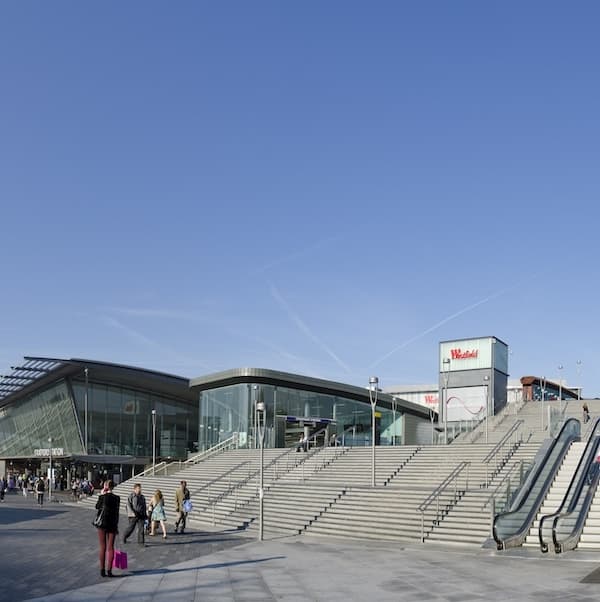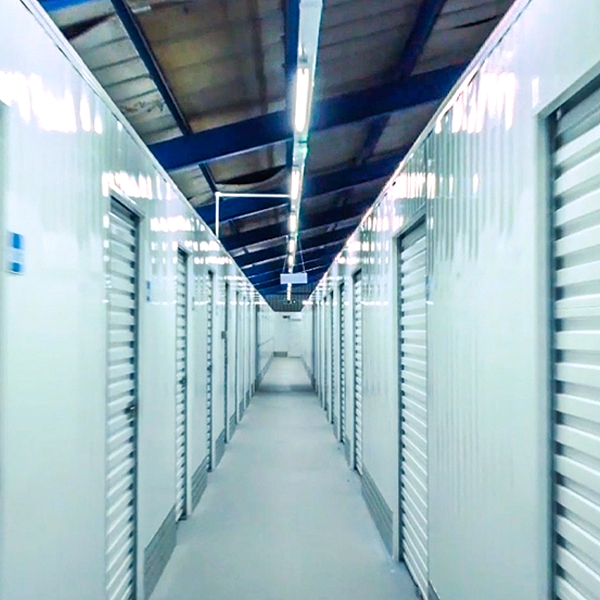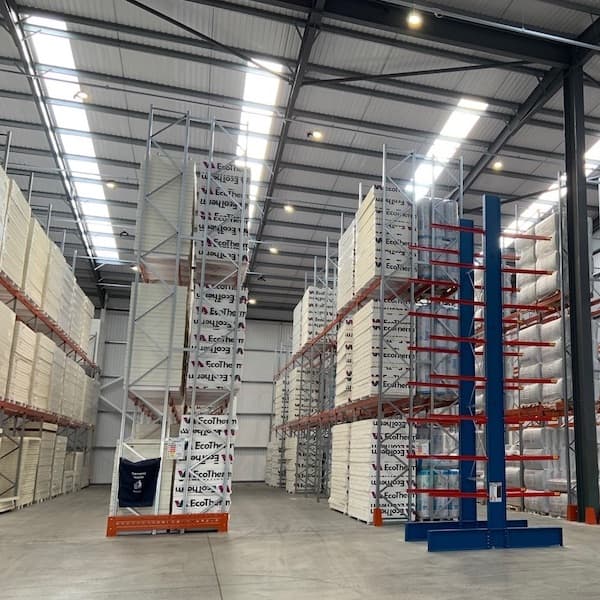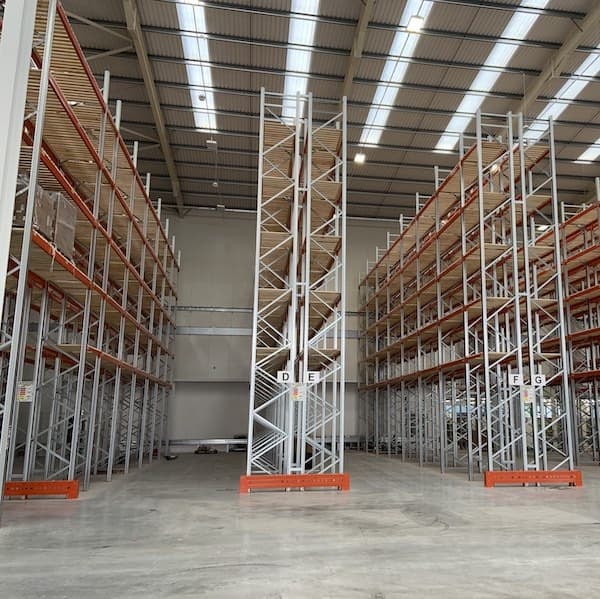- Mezzanine Floors
- Solutions
- Multi-Tier Mezzanines
- Mezzanine Pallet Safety Gates
- Mezzanine Staircases
- Mezzanine Handrails and Balustrades
- Mezzanine Decking
- Fire Protection for Mezzanine Floors
- Mezzanine Lift Shaft Design and Installation
- Resources
- Mezzanine Floor Calculator
- Mezzanine Floor Regulations and Building Control
- Self-Storage Mezzanine Floors
- Self-Storage Units
- Resources
- Self-Storage Site Selection Information
- Calculating The ROI of Self-Storage Conversions
- Planning for Automation in Self Storage
- Racking & Shelving
- Services
- Racking Design
- Racking Manufacture
- Racking Installation
- Racking Inspections
- Retail Racking And Shelving Systems
- Solutions
- Cantilever Racking
- Pallet Racking
- Coil Racking
- Longspan Shelving
- Tyre Racking
- Kimer Racking
- Live Storage Racking
- Drive In & Drive Through Racking
- Clip Shelving
- Mobile Shelving
- Custom Fabrications
- About Us
- USS Case Studies
- Self-Storage Fit-out For Raked Ceiling Building
- Mezzanine And Staircases For Entertainment Venue
- New Mezzanine And Staircases For Major Retailer
- Mezzanine Pallet Safety Gate
- Self-Storage Fit-Out Project For Brand New Facility
- Warehouse Racking, Wire Mesh & Shelving for New Warehouse
- Self-Storage Partition System & Components Installation
- Self-Storage Store Mezzanine And Staircases
- Multi-Tier Mezzanine For Logistics & Distribution Facility
- Warehouse Plant Platform
- Self-Storage Facility Space Expansion
- Mezzanine Floor For Distribution Warehouse
- Bespoke Feature Staircase & Mezzanine
- Single Level, Multi-Use Mezzanine
- Mezzanine For A New Building
- Mezzanine Floor For Plumbing Supplies Warehouse
- New Racking System and Mezzanine Floor
- Car Park Conversion To Self Storage Facility
- Pallet Racking and Cantilever Racking For Warehouse
- Two Mezzanine Floors For Self-Storage Facility In Birmingham
- Our Accreditations
- Contact Us
- USS Case Studies
- Do processes in the warehouse slow down in any particular area?
- Are any items of equipment causing a safety risk?
- Could the space in the warehouse be reorganised to make picking more efficient?
- Are individuals and teams able to do their jobs without hindrance?
- The time it takes to receive new items and process them into existing stock
- The time it takes operatives to pick items – measured in terms of both specific items and the particular location of the warehouse
- The speed with which orders are fulfilled – i.e. picked, packed and dispatched
- Costs per order – an overarching KPI which takes the total warehouse costs and divides that figure by the number of orders shipped
- The number of loading docks standing empty and the time they are left standing empty
- The time employees spend on non-productive trips from one part of the warehouse to another
The Latest Blogs From USS
Practical Ways To Improve Warehouse Efficiency
read

We’ve written previously about the growing demand being placed on warehouses in the UK and the fact that this on-going demand comes hand in hand with a staffing crisis.
This demand puts even more pressure on warehouses to improve their efficiency. Consumers are demanding next—or even same-day delivery—not as an added extra but as the norm, and this means that the warehouses at the centre of logistics operations need to run as smoothly as possible to process goods at speed.
Teetering on the Brink of Efficiency?
As long as there are no apparent problems in a warehouse – piles of unpacked goods or orders waiting to be dispatched – it might be tempting to assume that you can't finesse your operation any further. However, 'just efficient enough' carries a significant risk. The risk is that any small failure in the workflow, an increase in the volume of handled goods, or problems finding enough employees could be enough to cause chaos if you haven't got the headroom - or the potential for headroom - that constantly fine-tuning operational efficiencies can create.
Before outlining how to streamline operations to produce efficiencies, it's worth assessing how well your operations meet the efficiency values you need.
An Audit Shouldn't Be a Once in a While Event
Put simply, you need to audit the operations of a warehouse on a regular basis and put KPIs in place in order to garner a full picture of what is and isn’t working across the board.

A regular audit would involve the simple act of stepping back and observing the operation of processes so you can answer questions such as:
By reviewing the way employees and items move through and around the warehouse, you'll be able to answer questions such as these and deal with the fact that operations within a warehouse will often grow and develop piecemeal and organically from what may have been a relatively efficient starting point.
In addition to tracking the processes in your warehouse in this manner, you can use several carefully chosen KPIs. These are the figures which, once logged, you can return to and find out whether your warehouse is becoming more or less efficient. KPIs might include things such as:
Once you've conducted an audit and created a set of KPIs to compare over a given time frame, you can start thinking about how to make your warehouse more efficient.
Layout
The first thing to do is ask yourself if efficiency is being hampered by either a lack of space or by operations—such as picking, packing, and inserting documentation—being situated too far apart. Tracking employee movements can provide this insight, and a rearrangement of warehouse racking can solve this problem.
For example, your audit may reveal several common factors affecting most processed orders. Rather than storing everything on racks in order of size, date received, or some other metric, you could redesign the storage to ensure that these high-demand items are located close to each other and close to the picking and packing stations. This design will eliminate the requirement for employees to walk past racks of less popular products to retrieve those that are more high-volume and, thus, save time.

If space is an issue, consider utilising any available space above ground level with the installation of a mezzanine floor. You can generally install floors of this kind without planning permission, although you should always check first. You could use a floor to shift low-volume goods onto a higher level, enabling the concentration of high-volume items.
Alternatively, you could use the mezzanine area for the office and clerical space the warehouse needs, thus freeing up more space on the ground floor to create wider aisles between racks and enable employees and items to move more quickly and safely.
Multi-Tasking Employees - Upskilling For Retention
All too often, working in the logistics sector is seen as a low-skilled option, which is one reason why recruiting and retaining employees can be so tricky. The alternative to this is to ensure that your employees receive quality training in the tasks they have to perform and understand the role of each task in the broader warehouse operations.
In addition to this, however, you can improve efficiency by ensuring you train your employees in more than one area of operations. No employee should be just a picker, a packer, or someone who deals with inventory. By ensuring your employees can multi-task, you can deploy them flexibly to keep pace with any shifts in demand or availability. If employees are off sick in one part of the warehouse, you can shift employees from another to take up the slack without the process suddenly slowing down and causing a bottleneck.
From the employee's point of view, they'll have one more thing to put on their CV. The flip side is that if you swap and change responsibilities regularly to freshen things up, staff will be less likely to grow bored and suffer poor morale.
Stock Replenishment Strategy
Choose a replenishment strategy that best suits how stock moves through your warehouse. In some cases, this means relying on warehouse management software to keep track of inventory in real time and be aware of what does and doesn't need reordering. Suppose you still need to switch over to WMS. In that case, you need to decide on a strategy – specific reorder points or a top-off method which replenishes stocks during slower periods (i.e., when dealing with more seasonal items) to ensure that stock doesn't run low when demand spikes.

Any stock replenishment method relies on a complete and accurate understanding of stock levels in a warehouse at any given time, which is where the audit and KPIs can come to the fore. The more advanced software will track items using either barcodes or, in some cases, radio frequency technology. However, it would help if you understood when and why stock needs replenishing.
Feedback
Running a warehouse means being able to take an overview of the operations as a whole, but sometimes, the first people likely to spot any problems—before they become large enough to impact on a broader scale—are the employees working on the warehouse floor day to day.
Whether they feel empowered or motivated to flag up any nascent problems depends on how connected they feel to the broader operation of the warehouse and the management.
The culture of your warehouse is essential to ensure that there are mechanisms in place for employees to give feedback on anything they feel isn't working as well as it should. These mechanisms could be as simple as a clear line management structure, so they know who to go to with problems. Similarly, regular meetings to discuss issues are essential. Hence, employees feel empowered to point out any problems; for example, the racking in aisle seven is over-packed, meaning it takes longer to find items.
Embrace Automation To Breathe Fresh Life into Your Operation
Entire articles could be written about the automation of warehouse operations, and companies like Amazon are rapidly moving toward a situation in which most warehouse operations are handled by robots of one kind or another.
If you're starting from scratch with an unlimited budget, then this might well be the way to go. Still, for most warehouse operators, automation must be introduced gradually without unduly disrupting day-to-day operations. Use your KPIs and the audits you conduct, with regular reviews of the warehouse layout and employee travel times, to identify areas where introducing some form of automation could improve efficiency.

The most likely starting point would be conveyors linking stations such as picking, packing, and sealing so that employees don't have to transport goods between them. Other options could include autonomous mobile robots to carry goods between stations and employees.
Other options include packing functions such as carton building, applying labels and inserting documentation, and even robotic arms to pick items from the racks. Automation of this kind is at the cutting edge of warehouse efficiency. Still, even the most advanced technology will only be effective if you know where your warehouse could be more efficient and how to utilise your employees best once freed from more mundane, repetitive, and time-consuming tasks.
This blog is for information purposes only and should not be construed as legal or financial advice and not intended to be substituted as legal or financial advice.
Find Us
S & L United Storage Systems Ltd
United House, The Street
Takeley, Bishop's Stortford
Hertfordshire, CM22 6QR
Company No. 1313816
VAT No. 291616253Say Hello
01279 871 787Copyright © 2025 S & L United Storage Systems Ltd. All rights reserved.
- About Us






